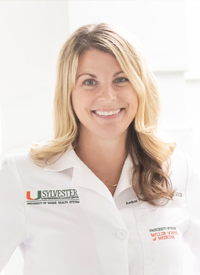Challenges Faced by Adolescent and Young Adult Patients With Cancer
Adolescents and young adults who have cancer also have a negative body image, financial toxicity, and concerns about family planning.
A cancer diagnosis is difficult to process at any age. But fighting the disease as an adolescent or young adult (AYA) presents unique challenges.
A patient is considered to be an AYA if diagnosed between the ages of 15 and 39 years.1 In 2022, the number of new AYA cancer diagnoses rose to 87,050, which is 4.5% of new cancer cases at any age, representing a steady increase over the previous 2 decades.2 Some of the most common cancers in this patient population are leukemia and tumors of the brain and other nervous system tumors (ONS), the breast, cervix, and testis.3
Anaisys Rueda MSN, APRN-BC

Although the possibility of death is an important topic to broach with AYA patients, other areas of concern are often overlooked.1 Cancer disrupts the most formative years in the lives of young adults and can impact their emotional, cognitive, and social development.1 It can wreak havoc with their current and future plans, self-image, education, career opportunities, relationships, and ability to have children.1,4 Managing these upheavals is an unmet need for AYA patients, and clinicians can play a key role in helping them navigate the cancer trajectory, including remission and recovery. Body image can influence a person’s self-esteem and interaction with others.5,6 The physical changes caused by cancer and its treatment can negatively impact the self-image of all patients, but it is largely underemphasized in the AYA population.6 The results of a recent qualitative study showed that 45% of AYAs indicated that treatment-related complications, including alopecia, scarring, and weight gain, were detrimental to their body image and self-esteem.5
Jessica MacIntyre DNP/MBA, NP-C, APRN, AOCNP

Sexual dysfunction and concerns about fertility are also felt particularly strongly by AYA patients.4 Not only are they worried about mortality and disease recurrence, but many of the treatments they receive can lead to sterility. Patients whose reproductive organs are removed, who receive metal-based chemotherapy regimens, or who undergo radiation are at high risk of posttreatment infertility. But they do not have to be. Cryopreservation allows for pretreatment harvesting of eggs and sperm. Clinicians should recognize how a cancer diagnosis may impact an AYA’s family planning and initiate candid conversations about their options to help them have a family of their own when they’re ready.
AYAs diagnosed with cancer also require financial counseling because they experience financial toxicity more than any other age group.2 Compared with older patients, many AYAs are underinsured and often receive their diagnosis just as they are transitioning to financial independence. In addition, they are usually unable to tap into the resources—such as retirement funds or home equity—that older individuals may be able to access.7 Although more than half of AYAs have reported that they would benefit from financial counseling and assistance, almost none receive it unless they know to ask for the specific resources dedicated to helping them.4
Amber Thomassen MSN, MA, APRN-BC, AOCNP

Finally, learning that treatment is working does not lessen the potential for post-treatment challenges.1 AYA cancer survivors are at an increased risk of developing secondary malignant neoplasms (SMNs), most commonly breast, gastrointestinal, genital, and skin cancer.8 Additional challenges for AYAs include continuing school after treatment or reentering the workforce or the dating pool.1 This can be an exceptionally lonely time for AYAs, as they may not have a support system that understands what they are going through. Others may feel as if they are expected to simply be happy about having survived, which creates a sense of guilt and anxiety about conflicting thoughts and emotions they may have.9
Clinicians working with this population must address not only traditional issues related to cancer but also those that come about due to the patient’s life stage. It is therefore important to develop programs that are geared specifically toward this population and include evidence-based, patient-centered multidisciplinary care.1 Because AYAs can often feel alone during their journey, events, activities, and support groups that center around the AYA cancer experience are also very useful.10
Health care professionals can better serve AYA patients by recognizing the special challenges they face in addition to the social and psychological difficulties that come with cancer. They should feel comfortable discussing these issues with patients and be aware of the resources that exist, within their institution and in the community at large, to support the complex needs of this population.10
References
- John Stoddard Cancer Center. Hope for AYA cancer patients & survivors. UnityPoint Health. March 6, 2015. Accessed October 7, 2022. https://bit.ly/3eiQ19h
- Miller KD, Fidler‐Benaoudia M, Keegan TH, Hipp HS, Jemal A, Siegel RL. Cancer statistics for adolescents and young adults. CA: Cancer J Clin. 2020;70(6):443-459. doi:10.3322/caac.21637
- Cancer Stat Facts: Cancer among adolescents and young adults (ages 15–39). National Cancer Institute. Surveillance, Epidemiology, and End Results Program. 2021. Accessed October 7, 2022. https://bit.ly/3emPx1I
- Silin C. Help AYA survivors and patients with cancer navigate infertility. ONS Voice. October 2, 2020. Accessed October 7, 2022. https://bit.ly/3Mf68RD
- Brierley MEE, Sansom‐Daly UM, Baenziger J, McGill B, Wakefield CE. Impact of physical appearance changes reported by adolescent and young adult cancer survivors: a qualitative analysis. Eur J Cancer Care. 2019;28(4): e13052. doi:10.1111/ecc.13052
- Tort-Nasarre G, Pollina Pocallet M, Artigues-Barberà E. The meaning and factors that influence the concept of body image: systematic review and meta-ethnography from the perspectives of adolescents. Int J Environ Res Public Health. 2021;18(3):1140. doi:10.3390/ijerph18031140
- Kaddas HK, Pannier ST, Mann K, et al. Age-related differences in financial toxicity and unmet resource needs among adolescent and young adult cancer patients. J Adolesc Young Adult Oncol. 2020;9(1):105-110. doi:10.1089/jayao.2019.0051
- Second cancers related to treatment. American Cancer Society. Updated February 1, 2020. Accessed October 7, 2022 https://bit.ly/3T2ois6
- Perez S, Greenzang KA. Completion of adolescent cancer treatment: excitement, guilt, and anxiety. Pediatrics. 2019;143(3):e20183073. doi:10.1542/peds.2018-3073
- Wong AWK, Chang TT, Christopher K, et al. Patterns of unmet needs in adolescent and young adult (AYA) cancer survivors: in their own words. J Cancer Surviv. 2017;11(6):751-764. doi:10.1007/s11764-017-0613-4




